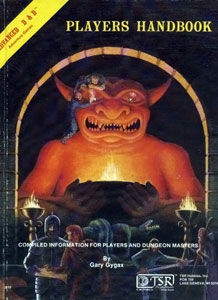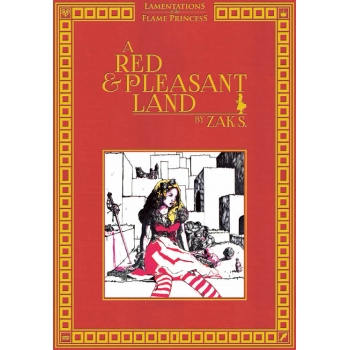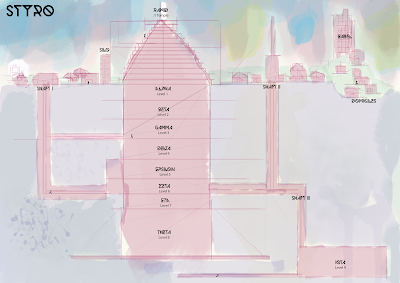This thing is pretty awesome. I enjoy an abundance of colour; something you may have witnessed in my own offerings. The interior of this zine is printed on bright green paper, bearing an equally colourful (and pleasingly violent) cover. Although presented as being "compatible with DCC RPG", it is an ideal candidate for general idea-thievery. Okay yes, it's also suitable for DCC players too. The First Issue begins strongly — the interior cover has a one-page adventure.
The adventure is penned by Ron Yonks and is entitled Calcified Caves of the Slime Yeti. Mechanically it is very minimal — the sort of minimalism that endears me to the immediate possibilities. I'm totally going to throw this into my upcoming OD&D campaign as a side-jaunt. I'll change some things of course, but I could almost run it as written.
The next page is the credits page. Mine came with a temporary tattoo (yes, you read correctly. I have some real ones, but the idea is still fun), and a hand-written note from Taylor. My copy is "damaged" and was thus free. It has some ink stains and a few rough edges. Taylor explains this, but elaborates that it is still a "good example of the issue". Yes it is Taylor, it's a very good example. I received a bunch of stuff from Stormlord Publishing this week, and comparatively they are very fastidious with their workmanship. However, I really appreciated the from-me-to-you aesthetic of Taylor's zine. It's homely, and I think that makes it inviting. If I spill coffee on it I won't really care, but that's how game materials should be used. I have a lot of stuff on my bookshelf that I'm overly careful with because it's effectively too "nice" to use. Dungeon Lord begs you to use it. I will.
The bulk of the zine is comprised of an adventure: "The Caves of the Sacred Seven". I can't be bothered explaining the plot, but it was a nice balance between "ecological" (or sensical) and gonzo. Again, I'll probably use some/all/bits of this in my OD&D campaign. It makes an interesting locale for adventure, with the possibility of finding some nice magic items. It has cavemen, reptilians, dinosaurs, transmuting corridors, "wild men", psychedelic spores, and a "hovel". My kind of adventure. Some bits are slightly silly or not quite my bent, but the basic structure is definitely pleasing. The Caves of the Sacred Seven is fairly basic in execution, providing enough detail to run, but not too much. The reader does not become bogged down when attempting to run it "correctly". It isn't long, and it isn't short. The remainder of the zine varies in usefulness: I didn't like The Tomb of Zarfulgar the Lost (another adventure), but I appreciated the simple (if slightly bland) blank dungeon on the back cover, the historical account of this zine's inception, and the "Random Dungeons Elevation" generator. One page of the zine was a poem, which I was decidedly ambivalent about. It wasn't horrible, more of a page filler.
Conceptually, I want to discuss two things that particularly impressed me about this issue/zine. The first is the artwork. No one could accuse this zine of an enormous budget for commissioned art, but that is the beauty of it. It reminds me of Gygax and Arneson's earliest D&D efforts, and I mean that as a huge compliment. It is effortless, and is not pretentious. What you see is what you get. There are no gimmicks; nothing to hide behind. The content is either good, or it's shit. And like Gygax and Arneson's first efforts, it invites you to take part. This idea segues nicely into my second point, which is that Taylor actually explicitly asks you to take part. The zine's introduction attributes inspiration to "everyone who ever experienced the joy of fantasy role-playing in such a profound way that the urge to create overcame them." It asks the reader to, in turn, become inspired and "make something of your own."
The cynical reader may be laughing at me for my sentimentality (that's actually a word), but I like it. The DIY scene needs more inclusiveness and encouragement.Taylor seems to champion this idea. Most days, when I scroll down my G+ feed, there will be some kind of negativity about certain subcultural factions of the wider OSR community. That's a normal part of being human, but I find the positivity of this zine (and its creator) extremely refreshing.
Anyway, this thing has my vote. Seriously, in terms of page count and cost, Dungeon Lord punches far above its weight. I've paid $40 for supplements I've liked less, and with much larger budgets. Maybe the best things in life are free.




























